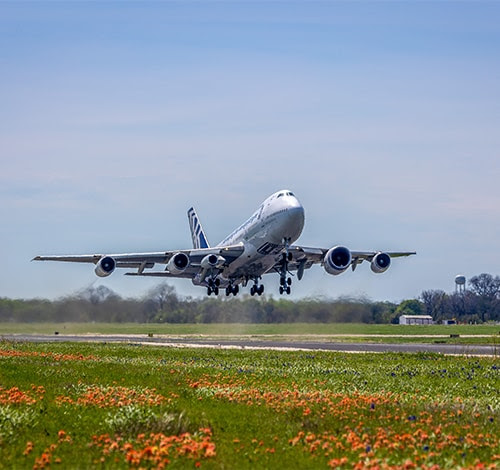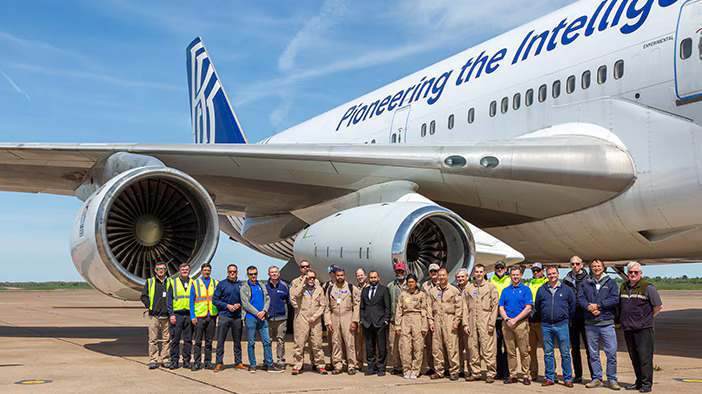The multi-tasker that loves to be tested
Meet our magnificent multi-tasker of the skies – the Rolls-Royce Flying Test Bed
US, April 3. Ensuring our engines are proven to be efficient and reliable before they enter customer service is a key requirement – and one of the ways we have done this is on our Flying Test Bed (FTB), a Rolls-Royce-owned Boeing 747-200.

Based in Tucson, Arizona, USA, it can have a variety of engines fitted to it to give them a real-life test run in the air, providing valuable performance data – up to 20GB of data per day, more than the average UK household uses in a month – that adds to the extensive ground tests that have gone before. But the FTB isn’t just for brand new engines, it can also test in-service engines with new technology upgrades.
Right now, it is embarking on its latest mission, flying our new Pearl 10X engine prior to it entering service on the Dassault Falcon 10X. As the aircraft usually has four engines, we can ensure safety at all times by having one test engine operating alongside three other engines that are already established in service.
For these latest tests, the FTB has a real mixture, becoming a five-engine aircraft with the Pearl 10X joined by a Trent 1000 and three RB211s.

One FTB test with a difference took place in 2021, when it was used to test a Trent 1000 engine running on 100% sustainable aviation fuel, while its other three RB211 engines ran on “standard” jet fuel. The 3hr 45 min flight from Tucson over Texas and New Mexico confirmed there were no engineering issues and was part of our wider, and now-completed, programme to confirm our in-production engines are compatible with 100% SAF.
Deborah Robinson, Director Test and Experimental Engineering, said: “Our FTB is a great asset to us it is part of wide range of test capabilities that help us ensures our engines do everything we say they will. Computers and rig tests can achieve a lot, however in the air we can take it that step further and perform a wide range of tests to further confirm the results of our extensive ground and rig test programmes. We can take the opportunity to test the corners of the flight envelope and feed back into our extensive models.”





